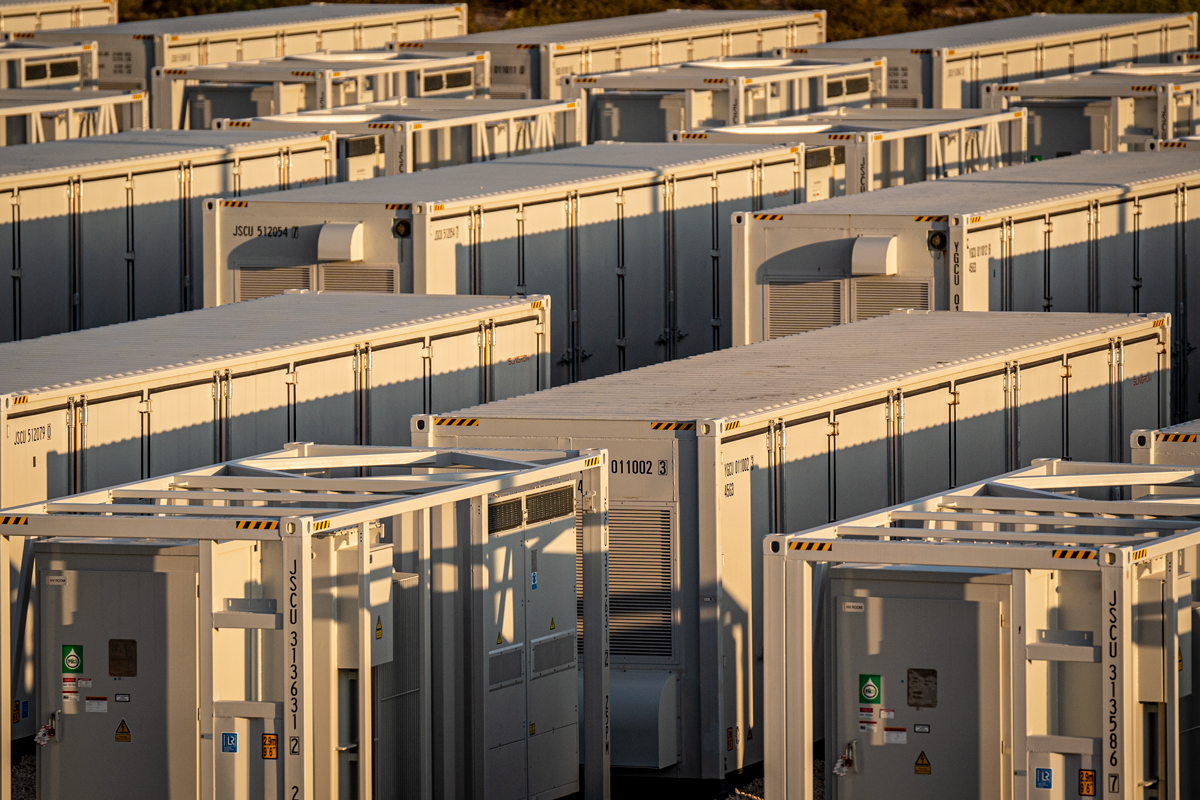Key Takeaways from Future of Global Energy Virtual Sessions
Published Jul 18, 2022 by Alex Peña
The Partnership's Houston Energy Transition Initiative and the Center for Houston's Future held the three-day Future of Global Energy conference presented by Chevron in late June. The final day of the annual conference included virtual sessions featuring nearly 40 leaders in industry, academia and public interest organizations sharing insights on the changing energy landscape through a global and national lens. Panelists also highlighted Houston's achievements and the opportunity to lead the transition to an energy-abundant, low-carbon world. Below is an overview of what these leaders shared related to carbon capture, use and storage, decarbonization, hydrogen and climate equity.
CCUS - Sponsored by Sempra
Carbon Capture, Utilization and Sequestration (CCUS) is an integral element of the energy transition, and more and more projects are coming online around the world. This track focused on understanding the CCUS landscape both domestically and internationally, the important role technologies like CCUS play in helping Houston meet its low carbon goals and support global decarbonization, and over the horizon technologies and applications expected in CCUS through the energy transition.
Session 1, "Global & National Context: What is Happening in CCUS Around the World," began with how North America is leading the way in CCUS project development, and why project activity is increasing in Australia and Europe. Texas alone has 8 projects with projected capital expenditures of $102 billion. A key point of CCUS is that it enables carbon mitigation because storage and transport of CO2 are source-agnostic, enabling implementation across the energy sector. Keynote speaker, Sallie Greenberg, provided an overview of the DOE's CarbonSAFE program and discussed how hubs are emerging as the infrastructure of the future, both in carbon storage and clean hydrogen production. The federal tax credit 45Q has a "steel in the ground" construction date of January, 2026, making CCUS enabling policies all the more important. The number of projects globally will need to double to meet 2030 emissions reductions targets.
Speakers:
- Sallie Greenberg, Principal Research Scientist of Energy & Minerals – Illinois State Geological Survey, University of Illinois
- Moderator: Amanda Duhon, Director, EIC North & Central America, Energy Industries Council
The second session, "CCS in the Houston Region: Challenges and Opportunities for Deployment," highlighted many opportunities in metro Houston. There are immense geological assets in the region that position Houston to lead CCS deployment. In addition, there are significant input sources of CO2 from refineries, petrochemical plants and other sources along the Gulf Coast along with assets and infrastructure in place to offtake and store CO2. The talent, knowledge and expertise to commercialize CCS at scale exists in Houston like no other place. Houston has the opportunity to be the epicenter of CCS, even though the technology will be widely deployed globally. However, there are challenges to deployment. First, there is the need to drive down the cost of carbon capture technology. The cost of capture increases as the stream of carbon dioxide becomes more dilute, particularly in certain applications like direct air capture. Also, although new projects have been announced in North America and along the Gulf Coast, development of these projects will require capacity at the state and federal level to approve Class VI permits and a durable regulatory framework to reduce uncertainty in investments, including addressing long-term legal liability.
Speakers:
- Frederick Eames, Partner, Hunton Andrews Kurth LLP
- Ed Graham, Vice President – Ventures, ExxonMobil Low Carbon Solutions
- Chris Powers, Vice President – CCUS, Chevron New Energies
- Todd Thornton, Senior Vice President, Origination and Development, Calpine
- Moderator: Patrick Johnson, Partner, Bracewell LLP
Session 3, "What’s Next in CCUS: Innovations in Technologies Across the Supply Chain," discussed the importance of new technologies that are nearing commercialization and how these technology advances can help to educate regulators, investors and users on how to scale CCUS. Other key takeaways from this session included a discussion on the importance of the 45Q tax credit and its role in providing long-term value stream to develop CCS projects. In the near-term, tax equity, legal, regulatory and other measures are extremely important in the economics of CCS projects. Also highlighted was the importance of effectively engaging stakeholders to put a project into action. Panelists agreed on the need for mega-projects in CCS while also underscoring the importance of smaller projects that can prove technologies, demonstrate the safety and reliability of technologies and provide a stepping stone to mega-projects in the future. Finally, the panel discussed the importance of utilization as a means to bring carbon capture to scale and underscored that CO2 needs to have a value to make projects more economic. Houston and the Gulf Coast region need to show an ability to permit and manage CO2 transport and storage safely to demonstrate the important role of CCUS in achieving an energy abundant, low-carbon future.
Speakers:
- David Bahr, Director - Decarbonization, Wood
- Ashleigh Ross, Vice President, Commercial Development and Strategy, Carbon America
- Richard Tomaski, Director - Project Development, Sempra Infrastructure
- Moderator: Clint Wood, Partner, McKinsey
Decarbonization Track - Sponsored by Accenture
The Decarbonization Track showcased digital solutions being developed right here in Houston to help reduce emissions across the supply chain. We learned that energy operators are leveraging their expertise to implement solutions that will reduce the emissions from operations and the carbon intensity of oil and gas produced. Exploration and production are highly technical activities, and accurately measuring CO2 emissions from operations and production is becoming increasingly important. Digital solutions are becoming increasingly important to the energy transition. This panel and sessions discussed the technologies companies are currently utilizing to lower operational emissions, the ways companies utilize technology, like drones, AI, and the like, to measure, monitor and mitigate carbon emissions and showcase how digital solutions can be deployed from wellhead to consumer.
The first session, "Decarbonizing Oil & Gas Operations: It’s Not Business as Usual," described the importance of carbon baselining for enterprise-level emissions monitoring, identifying value-adding opportunities, and prioritizing solutions for sustainable emissions reductions across global operations. Integrated oil and gas companies know how to run complex projects and tackle full life cycle challenges with commitments to sustainability, reliability, innovation, and efficiency at every level. A key take-away from this session focused on leveraging relationships within the energy sector and beyond and the importance of developing holistic solutions at a scale that can simultaneously lift millions of people out of poverty and provide a return on investment. Speakers included Peter Evans, Vice President, Subsurface, Gulf of Mexico & Canada, bp America; Dan Farler, Vice President, Engineering & Projects, Hess Midstream; Jack Stout, Vice President, Growth and Development, Applied Intelligence, Wood; and moderator, Stephanie Rogers, Managing Director, Resources, Accenture.
Speakers:
- Peter Evans, Vice President – Subsurface, Gulf of Mexico & Canada, bp America
- Dan Farler, Vice President – Engineering & Projects, Hess Midstream
- Jack Stout, Vice President, Growth and Development – Applied Intelligence, Wood
- Moderator: Stephanie Rogers, Managing Director, Resources, Accenture
In session 2, "Measuring and Managing Emissions in the Energy Industry," we learned about a wave of activity in the voluntary markets for sustainably-sourced crude oil and natural gas driven by investor and customer expectations. First movers are driving ROI by leveraging emissions management and continuous monitoring technologies in assets across energy supply chain and the combinations of digital, technology and capital required are all critical. Accurately reporting on emissions quantification and reduction actions is one of the smartest things that companies can focus on presently. Risk and uncertainty in compliance and reporting lead to fear over accuracy of the final disclosures - which is the most critical aspect to understand exactly how technologies are impacting a firm's disclosures. Driving alignment between technical emissions management approaches and corporate sustainability reporting with robust data and quality control, integration across operations and third party validation for calculations and disclosures is necessary to ensure accurate and fact-based reporting that is consistent with a company's culture and values. This session emphasized the importance for companies to evolve from monitoring, detecting and measuring emissions and leaks to addressing emissions across their portfolios with forecasting and actions to drive emissions prevention, reduction, and optimization. Speakers from this session included Sacha Abinader, Managing Director, Strategy & Consulting, Accenture; Kayla Ball, Chief Product Officer, Valider; Anne Carpenter, Partner, Baker Botts; and moderator, Nick Fulford, Senior Director – Energy Transition, Gaffney Cline.
Speakers:
- Sacha Abinader, Managing Director, Strategy & Consulting, Accenture
- Kayla Ball, Chief Product Officer, Validere
- Anne Carpenter, Partner, Baker Botts
- Moderator: Nick Fulford, Senior Director – Energy Transition, Gaffney Cline
In the last session for this track, "Innovation in Decarbonization: Houston Based Startups Discuss the Landscape of Digital Solutions for Emissions Reduction Across the Supply Chain," panelists shared that emissions reduction is the path to the future and that companies have to continue to run their operations while developing their emissions reductions plans to decarbonize and create transparency throughout the complex supply chain and technology ecosystems. Decarbonization is about all options, and startups play a critical role in helping companies figure out the right decarbonization problems to solve. Startups need access to energy companies for capital and facilities for demonstration and pilot projects to develop at scale and create broad-scale solutions. Collisions that occur among energy majors, infrastructure companies and workforce in Houston are driving innovation in decarbonization. The session highlighted the conservative approach of traditional energy companies and the important role partnerships with startups and entrepreneurs will play in developing new solutions. Finally, we learned that policy and regulatory enablers are critical and industry needs hubs and clusters to enable investment in infrastructure that connects producers with customers in order to incentivize companies to make long-term investment decisions.
Speakers:
- Sujatha Kumar, Founder & CEO, Dsider
- Srikanth Muralidhara, COO, Flutura
- Edoardo Panziera, Founder & Managing Director, Ionada
- Moderator: Trinity Lloyd, Sustainability and Energy Transition Lead, Google
Hydrogen Track - Sponsored by Deloitte
The Hydrogen Track focused on supercharging decarbonization across the entire value chain, how clean hydrogen will play a vital role in reducing emissions in the Houston region and how a number of startup companies are developing the next generation of clean hydrogen technologies. This track discussed the issues that need to be addressed to successfully launch U.S. hydrogen markets, explored Houston’s advantages and challenges in developing a global clean hydrogen hub and shared what is on the horizon for clean hydrogen and how these technologies might disrupt the landscape.
The first session, "Hydrogen Hubs," began with insight into Greater Houston’s resources, including a large industrial demand for hydrogen, export potential through the Port and existing energy infrastructure, and how this will help Houston scale as a clean hydrogen hub. Other highlights from the session included Houston’s ability to match industrial consumers with hydrogen demand, to a consistent hydrogen supply with feedstock diversity and how this is integral for the successful, long-term development of a hydrogen hub. Policymakers must accelerate the speed of permitting for large-scale, low-carbon energy projects, including the pieces needed for Houston’s clean hydrogen hub, so hubs can scale more quickly and thrive.
Speakers:
- Matt Rogers, CEO, Mission Possible Partnership
- Moderator: Amy Chronis, Vice Chair, Houston Managing Partner, Deloitte
The second session, “Houston Hydrogen Hub Update,” provided information on Houston’s access to existing energy infrastructure – including pipelines, transmission and various modes of transportation – as well as an existing skilled energy industry workforce, innovations from academic institutions and access to renewable energy resources will aid in the development of Houston’s hydrogen hub. Panelists also emphasized that collaboration among stakeholders in Houston is integral and those involved must find shared objectives to fully take advantage of opportunities for hydrogen in Houston. The lack of state-level subsidies has the potential to hinder the development of a regional clean hydrogen hub. Implementing such policies would accelerate progress and support competitiveness.
Speakers:
- Paul Browning, President & Chief Executive Officer, North America, Fortescue Future Industries
- Georgios Plevrakis, Vice President of Global Sustainability, ABS
- Kristine Wiley, Vice President, Hydrogen Technology Center, GTI Energy
- Moderator: Geoff Tuff, Principal, Deloitte Consulting LLP
The last topic in the Hydrogen track, "Next Generation of Hydrogen Technology Development," discussed what's on the horizon for clean hydrogen and how these technologies might disrupt the landscape. Unconventional, “disruptive” technologies will help further accelerate the expansion of hydrogen and other low-carbon energy sources. Panelist Madhav Acharya, vice president of commercialization at Syzygy Plasmonics, highlighted its technology, which can convert traditional catalysts used in the chemical industry into high-performance photocatalysts energized by light instead of heat. Panelist Elina Teplinsky Winthrop, partner at Pillsbury Winthrop Shaw Pittman LLP, emphasized the use of nuclear technology in producing hydrogen, particularly with small modular reactors that are less capital intensive and can be located at industrial sites. Panelist Matteo Pasquali, director of Rice University’s Carbon Hub, highlighted techniques to take advantage of byproducts that can result when producing hydrogen. Carbon black, for example, can be turned into useful materials. He cited the Monolith factory in Nebraska that will use electricity to make 180,000 tons of carbon black and 60,000 tons of hydrogen per year, without CO2 emissions.
Speakers:
- Madhav Acharya, Vice President – Commercialization, Syzygy Plasmonics
- Matteo Pasquali, Director, Carbon Hub, Rice University
- Elina Teplinsky Winthrop, Partner, Pillsbury
- Moderator: Shari Boyd, Senior Manager, Deloitte
Climate Equity Track
A successful energy transition goes beyond emissions reductions – it will drive our economy, create new jobs, and improve the quality of life for all Houstonians. This panel explored how the transition can and must provide equitable opportunities for Houston’s workforce and communities and here are a few of the biggest takeaways from the last virtual session.
The City of Houston made two major announcements this past April on Earth Day. One focused on TCEQ-approval of the Sunnyside Solar Farm project that will convert a 240-acre landfill into the nation’s largest urban solar farm. The second was the launch of the City’s new Building Decarbonization Policy that will guide the decarbonization of the city’s portfolio of existing and future buildings. City of Houston Chief Resiliency and Sustainability Officer Priya Zachariah discussed the need to scale the effort to the private sector with wide-ranging messaging and a sense of urgency.
There is a significant amount of funding flowing from the federal government for job training, community college and other programs to prepare workers for jobs in needed fields. But the challenge is connecting with those would-be students—particularly in minority communities—through outreach activations in churches and other community organizations. “We have to be intentional about finding diverse students where they are if we’re going to succeed in obtaining the diverse talent that we need,” said Mark Crawford, Senior Vice President of Group Diversity and Inclusion at bp America.
Public-private partnerships are working effectively right now to ensure equity is part of the energy transition conversation. Such partnerships between institutions of higher education, community groups, business and others is a blueprint for developing more solutions but we must be intentional as a community to ensure the most vulnerable are not left behind.
Speakers:
- Mark Crawford, Senior Vice President – Group Diversity and Inclusion, bp America
- John Hall, President and CEO, Houston Advanced Research Center (HARC)
- Mike Webster, Associate Vice Chancellor, Workforce Instruction, Houston Community College
- Priya Zachariah, Chief Resilience and Sustainability Officer (CRSO), City of Houston
- Moderator: Jane Stricker, Senior Vice President and Executive Director, Houston Energy Transition Initiative, Greater Houston Partnership
Learn more about the energy transition initiative in Houston here.
 The Houston Report
The Houston Report



















